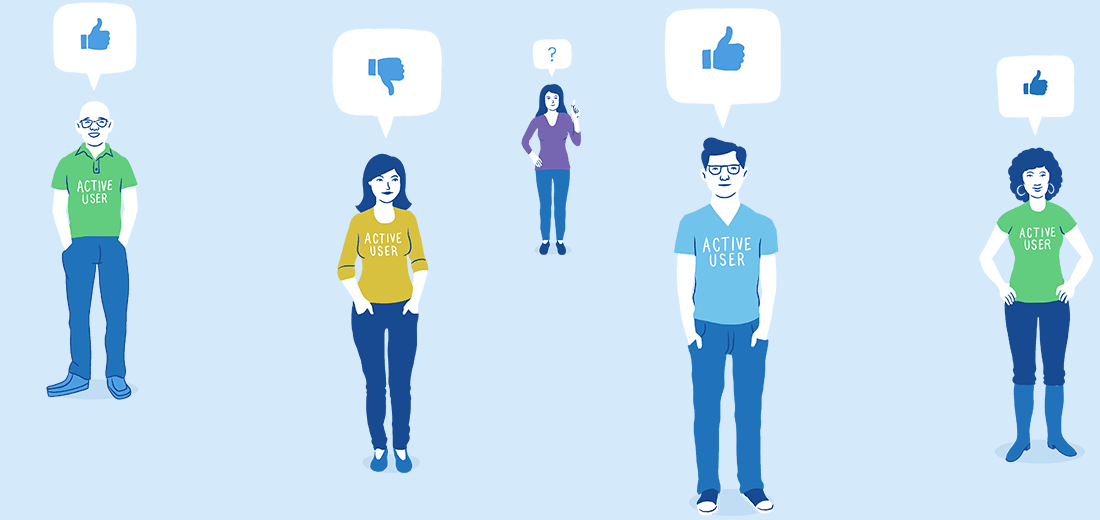Are you acquiring new customers each month, only to lose a substantial amount of existing customers at the same time? Then you’ve got a leaky bucket.
Customer churn is simply when your customers quit buying from you. Depending on your business model, customer churn can refer to anything from the cancellation of an account or subscription, to the nonrenewal of a contract, to a decision to shop at another location.
No matter how you calculate it, the higher your customer churn, the more danger your business has of failing.
Customers do leave from time to time. That’s normal. But, without a strategy to measure and mitigate damage, you have a problem. The good news is, once you understand the source of customer churn, you can make changes at the top of your customer funnel that keep paying customers happy long term.
Measure Your Churn
There are several ways to calculate churn, and you can even invest in software to help you do so. Ways to calculate include:
- The total number of customers or accounts lost during a specific time frame
- Percentage of customers or accounts lost during a specific time frame
- Recurring business value lost
- Percentage of recurring value lost
Calculating churn is the first step. With enough data, you can begin to predict churn at each stage of the customer life cycle and pinpoint where your efforts are needed most to retain more customers. As Neil Patel of Kissmetrics says, to keep churn low “use data to anticipate churn and then create personalized retention plans.”

Find the Right Customers
A major factor in reducing churn is attracting the right customers in the first place. Customer churn data paired with customer lifetime value (CLTV) metrics are powerful tools to help you curb churn before the customer acquisition process even starts.
As you calculate churn, you can also gather important data about the type of customer that tends to fall off and the reasons why. At the same time, CLTV helps you to identify your most profitable relationships.
Doing the math [(annual revenue per customer) X (number of years) – (cost of initial acquisition)] gives you the CLTV (customer lifetime value), basically the ROI on your customer acquisition spend. With the numbers in hand, you can differentiate high from low value customers, a help in measuring market opportunities, allocating costs and reducing the cost of their retention.
When your business can identify the least desireable and the most valuable customers, you can align your sales and marketing strategies to attract the most profitable customers to your business.
Engage New Customers Immediately
Once you have identified the right type of customer to attract, you can create a plan for keeping them engaged in your business long term.
Welcome email campaigns set the stage for long-term customer success, boost CLTV, and help to prevent churn. Much like you onboard a new employee, you want a programmatic way to introduce, engage, acclimate, sustain, and retain customers.
Experian reports that welcome emails, sent to newly acquired customers, have the highest open rates (nearly 60%). And Appboy, a marketing platform for mobile apps, reports that “sending a single onboarding-focused push notification to new customers during their first week on the app increased retention by 71% over two months.”
Don’t rely on your customers to discover the value of your product or service on their own. Actively demonstrate how they can get the most out of their purchase and you’ll prevent falloff on the back end.

Use the Right Tools to Run Successful Welcome Campaigns
Tools such as CRM and marketing automation software are essential for gathering data and launching personalized welcome campaigns to turn new customers into raving fans for your business.
Online software provider Flocknote is one such business realizing the benefits of an all-in-one CRM and automated marketing platform to bolster personal communications for their new customers.
“We continually use data from our CRM, Hatchbuck, to improve our welcome campaign which is critical to onboarding our customers,” says Kaitlin Rawley, Director of Growth at Flocknote. “We’ve been lucky to see almost double month-over-month growth in 2016 from 2015. While a lot of efforts have gone into that, without a doubt our efforts within the Hatchbuck sales and marketing platform have definitely contributed to that growth.”
On the CRM side, you can collect insights such as your customers’ interests, their engagement with your brand, and their online activity. Marketing automation then does the heavy lifting of sending personalized correspondence and assigning tasks to team members, making sure that each customer receives the appropriate communication during the onboarding phase. This way no one falls through the cracks to end up on your list of churned customers.
Powerful CRM data paired with marketing automation can help to segment your customers and personalize your correspondence based on a number of factors:
Demographics. On a very basic level, you can incorporate details like your customer’s name, title, company, and industry into your welcome emails to make them feel more personal. But don’t stop personalization there…
Pain points. You can segment your customers by their pain points, need, or role to send highly targeted help and advice. Think about the reason they purchased and make sure you can show them how you can fulfill your promise. For instance, if you provide pet care, you might have two different clients: those who need ongoing doggy daycare, and those who need boarding a few times a year. You can tailor your welcome campaigns to make sure your doggy day care customers know about your in-house dog groomer, while letting your boarding customers know how they can easily extend a stay for their pups.
Level of engagement. Your customers can give you warning signs that they will churn early on. For instance, if you’re a software company and a new user has never logged in to your app, you know they are not receiving value. You might have another customer who is in your application frequently, but has not discovered an important feature yet. Send welcome emails that nudge customers into taking the right steps to engage with your product.
Interests. The initial welcome period for a new customer is your honeymoon phase. They are excited about your business and their expectations are at an all-time high. This is the perfect time to boost CLTV for your new customers. Use data about their interests and leverage their purchase history to cross-sell and upsell your products and services. For example, say you’re an insurance company that sells homeowner’s insurance to many new families. Use your welcome campaigns to introduce them to the life insurance policies you offer as well.
As your welcome campaigns run, it’s important to measure what’s working and what needs improvement. Start with basic metrics, like email engagement. Your welcome campaigns should have high open and click-through rates. Then measure customer lifetime value and churn rates over time. Continue to analyze your customer base to see if a segment that received one type of welcome campaign is outperforming a segment that received another.
With personalized data at your fingertips, you will be in better position to wow and delight new customers and ensure they don’t fall through the bottom of the revenue bucket.
Source: All Business
